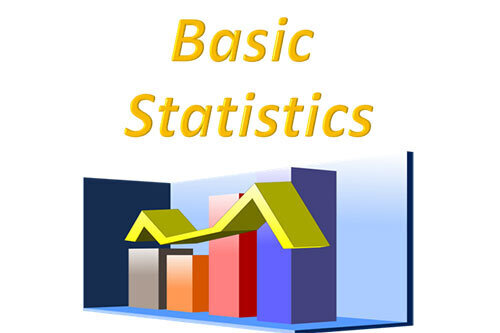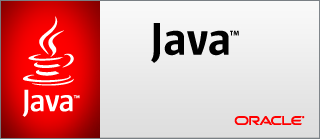Course Objective
The course should enable the students to:
|
1 |
Understand vector spaces and subspaces and apply their properties. |
|
2 |
Construct a mathematical expression that involving characteristics of matrices, such as its four fundamental subspaces, rank, determinant, eigenvalues and eigenvectors, diagonalization. |
Course Outcomes
After the completion of the course the student will be able to:
|
CO1 |
Demonstrate understanding of the concepts of vector space and subspace. |
|
CO2 |
Demonstrate understanding of linear independence, span, and basis. |
|
CO3 |
Determine rank by reducing the matrix to Echelon and Normal forms. |
|
CO4 |
Determine eigenvalues and eigenvectors and solve eigenvalue problems |
|
CO5 |
Determine a modal matrix, and reducing a matrix to diagonal form |
|
CO6 |
Compute inner products on a real vector space and orthogonality in inner product spaces. |
- Teacher: RAGA SUDHA JONNADA
COURSE OBJECTIVES:
UNIT | OBJECTIVES |
I | § Recognize different types of number systems as they relate to computers. § Convert values from decimal, binary, octal, hexadecimal, and binary-coded decimal number systems to each other and back to the other systems. § Add and subtract in binary, octal, and hexadecimal number systems. § Identify NOT, OR, AND, NOR, NAND, and XOR logic functions and their symbols. § Evaluate simple Boolean functions. § Identify common combinational building blocks. § Identify common sequential building blocks. § Application of logic to design and creation, using gates, to solutions to a problem. |
II | § Understand Boolean algebra and basic properties of Boolean algebra; § Able to simplify simple Boolean functions by using the basic Boolean properties. § Able to design simple combinational logics using basic gates. § Able to optimize simple logic using Karnaugh maps, understand "don't care". § Use DeMorgan’s Theorem to simplify a negated expression. § Formulate and employ a Karnaugh Map to reduce Boolean expressions and logic circuits to their simplest forms. § Create circuits to solve problems using gates to replicate all logic functions. |
III | § Define sequential logic circuit § Differentiate between combinational logic circuit and sequential logic circuit § Describe flip flop § Understand types of flip flops , truth tables , symbols , timing diagram and its application in logic circuits § Construct types of flip flops using types of logic gates by drawing symbols and truth tables and timing diagram § Build SR,JK,T,D flip flops using logic gates |
IV | § Understanding the operation and characteristics of asynchronous and synchronous counters § Analyze counter circuits and counter timing diagrams § Determine the sequence of a counter § Determine the modulus of a counter § Analyze various types of counters § Design 4-bit up and down counters based on D-type flip-flops § Design 4-bit modulo-n counters and binary coded decimal (BCD) counters. § Construct of up/down synchronous counters § Design of sequential systems § Design of sequential counters with specified sequences § To acquire knowledge about different types of semiconductor memories § To study about architecture and operations of different semiconductor memories. |
COURSE OUTCOMES:
OUTCOMES |
CO1: The students will be able to Distinguish different number systems and explains conversion of one number system to another. CO2: The students will be able to explain the concept of Boolean algebra, logical operators and logic gates and implements basic logic gates using universal gates CO3: The students will be able to design circuits for simple Boolean expressions and Identify applications for combinational logic circuits and Develop truth tables for different combinational logic circuits
CO4: The students will be able to Draw a Karnaugh Map for a 2-, 3-, 4-, or 5-variable logic function and Use a K-map to minimize and express it in either minimal SoP or PoS form 2-10. CO5: The students will be able to Draw a circuit for a set-reset (“S-R”) latch and analyze its behavior and compare the response of a latch and a flip-flop to the same set of stimuli.
CO6: The students will be able to analysis the different RAM and ROM architecture and interconnects and analysis about design and characterization technique. |
- Teacher: SOWJANYA D
Course Summary:
This is a basic course in statistics designed to provide students with the basic
concepts of data analysis and statistical computing. Topics covered include basic
descriptive measures, bivariate analysis and measures of association.
Course Outcomes:
Upon successful completion of this course, students will be able to:
• Organize, manage and present data.
• Analyze statistical data graphically using frequency distributions
• Analyze statistical data using measures of central tendency, dispersion
and location.
• Calculate and interpret the correlation between two variables.
• Calculate the simple linear regression equation for a set of data.
• Concept of Principle of least squares for curve fitting and regression lines
• Know the association between the attributes.

- Teacher: JAIMOLE CROSS
OBJECTIVE OF THE COURSE:
· Learning fundamentals of object-oriented programming.
· Able to work with Java IDE’s & acquire Compiling and interpretation Skills involved in JAVA execution.
· Able to code for topics like Constructors, Method Overloading/overriding, Inheritance, Abstract classes
· Understand the importance of Packages, Exceptions & Multi-threading, Files
· Proficiency to work with Advanced Java concepts like Applets, AWT, Swing and its components
· Aware of JDBC environment for Database connectivity and interactions
COURSE OUTCOMES:
By the end of the course, the student will be able to :
CO 1: Profound Knowledge on Core Java Programming and its applications
CO 2: Ability to describe and implement the object oriented principles
CO 3: Competency for implementing core Java applications given
CO 4: Potential to understand and execute Advanced Java concepts
CO 5: Able to explain JDBC connectivity
CO 6: Confidence to exhibit the acquired concepts in terms of seminar, GD and programming challenges

- Teacher: VIDYA SAGAR JODU
Course Description:
The course addresses the English language needs of the students at the undergraduate level. The focus will be upon four categories: Prose, Poetry, Vocabulary, and Grammar. In addition to these the last unit focuses upon developing the writing skills of students by including review writing. The content of the text raises questions of how English is used in India versus how it ought to be used and thus engaging the debates about a “standard English” and the need of adapting English to the local cadence and culture of India. Similarly, the British and American variations of the language are included to orient the students to broaden their view of English as an International language. Overall the course will focus upon the critical thinking faculties of the students concerning academic, linguistic, political, literary and ethical concepts.
The syllabus has been designed to develop linguistic and communicative competence of undergraduate students. The teachers also ask comprehension questions to stimulate discussion and based on the discussions the students are made to write short paragraphs /essays, participate in group discussions.
Course Outcomes:
The students will be able to:
CO 1. Read and interpret and analyze the implicit and explicit layers of meaning embedded in a poem.
CO 2. Identify poetic devices and the uncommon use of language in poetry.
CO 3. Become more empathetic and question the various forms of discrimination that exist in society based upon caste, race, gender and culture etc.
CO 4. Engage enlightenment values (liberty, equality and fraternity) and the idea of the secular nation versus a various groups divided on the basis of region, caste, creed and language.
CO 5. Understand the need for the English to be adapted to the local cultural contexts of India.
CO 6. Learn and use, technical and media vocabulary, and the differences between the British and American variations of the English language.
CO 7. Improve language skills by learning how to frame questions, use verbs and conditionals.
CO 8. Develop better writing skills and become adept in organizing one’s thoughts and ideas to write essays.
CO 9. Be able to write reviews and CVs.
- Teacher: Dr CHANDANA JOHN